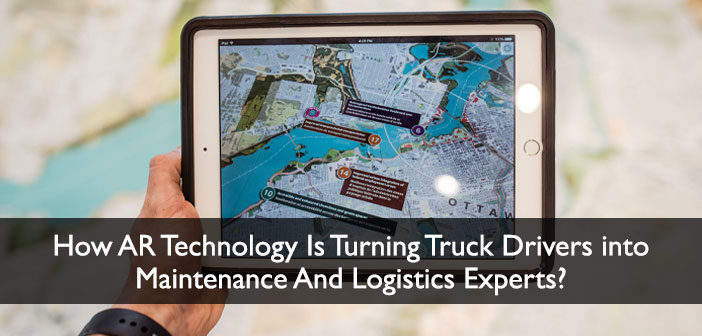The trucking industry is essential for many industries as it allows the transportation of essential goods and resources to and from suppliers. This is why many top companies have invested heavily in the newest technology to improve the trucking industry to make operations efficient and save costs in the long term. For example, a company can integrate a smart truck dash cam that uses AI algorithms into a truck to allow drivers to drive safely when on the route.
Similarly, augmented reality (AR) technology has paved the way to improve the maintenance and repair for truck drivers, which helps improve logistics for a company. This may seem like a sci-fi concept, but believe us, we have arrived at this unreal future. Don’t believe us? Please keep reading. This article will discuss precisely how AR technology turns truck drivers into maintenance and logistics experts.
AR Technology Can Help Drivers Locate Faults Instantly
Truck drivers spend a lot of time on the road, and their trucks will likely break down at some point. In such a situation, drivers will have to wait for a tow truck to take the truck to a local mechanic for repairs. Some drivers may fix the problem, but only experienced ones can really do this. Even if they manage to do it, it can take quite a while to locate the issue. The problem with this situation is that the shipment they are carrying will get delayed, which can result in revenue loss and upset clients.
This is where AR technology comes to save the day. AR technology can be integrated with smartphones or smart glasses and allow drivers to aim them towards the car. The technology will then display information related to the truck’s parts like engines, wheels, etc., in real-time, allowing them to detect faults and perform some basic repair that can allow them to get back on route. We have seen examples of technology like this being developed by companies like Mercedes, Volkswagen, and Caterpillar.
AR Technology Can Help Drivers Get Instant Assistance
In certain situations, drivers will have problems making repairs by themselves which is where they can get assistance from mechanics through AR technology. The mechanic can see whatever the driver sees through their device, and they can then make markings to bring drivers’ attention to specific spots. Additionally, they can guide them through the basic repair process by instructing them through the various steps required. This helps the driver get back on the road and helps him understand the repair process. This will help them become a maintenance expert and a logistics expert as well.
AR Technology Can Help Guide Drivers to Expert Assistance
In a situation where a complete breakdown or a major problem occurs, the driver will likely not be able to repair it. AR technology can guide them to a nearby local mechanic, garage, or parts dealer where they can get proper assistance. This will ensure that the repair is done as soon as possible, meaning that logistics will be a lot more streamlined. The information provided by AR technology can help, too, as it can provide the truck drivers with stats about their driving. This will help drivers understand how they are driving and improve it for more safe and efficient driving. Pairing AR technology with a smart truck dash cam can further improve this benefit as these dash cams can provide a score about their driving.
To sum up
AR technology has completely transformed the way maintenance and logistics works. Through AR technology, drivers can get real-time information that can help turn them into maintenance experts. This helps reduce the need to hire new mechanics. Additionally, this can help guide truck drivers to garages or repair shops which can save time and help from a logistics point of view. We have discussed these points in detail in this article and hope it has provided you with great insight into this remarkable technology. It is only a matter of time before we see this technology become common in the trucking industry.




